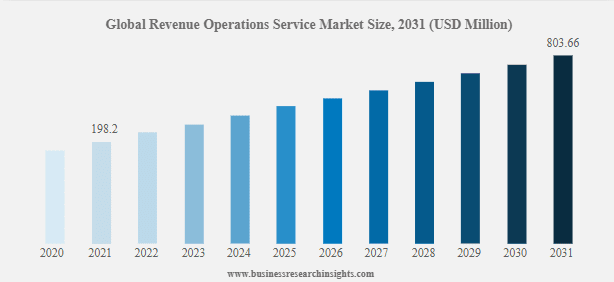Part One in a Five-Part Series on RevOps’ Transformative Role in Optimizing the Potential of Customer Data to Grow Customer Lifetime Value
If you’re a follower of trends that affect data-driven industries, it’s safe to assume you’ve seen a rise in references to revenue operations data integration. Often referred to as RevOps, it’s a concept that’s emerged as essential for enterprises that gather high volumes of customer data in the course of everyday business.
Historically, that revenue and communications data has accumulated in the applications and functional departments that gather it—resulting in significant caches of isolated data, all of which tell a fractional story of each customer’s journey with the organization collecting it.
RevOps: The Key to Digital Transformation
As the push for digital transformation has accelerated, the importance of customer data has grown clearer. Collectively, that data provides insights into each customer’s lifetime with the enterprise. Over time, customers tell us everything we need to know about their pain points, how they do business, and how we can anticipate and serve their needs. But when it’s confined in the silos where that data is gathered, it can only tell a fraction of each customer’s story.
As a result, customer-facing teams operate with limited details on each customer’s history. This, in turn, interferes with relationship development, diminishes customer confidence, harms data quality, and limits opportunities for team members to be seen as trusted advisors. Without a complete picture of the customer, they simply can’t understand and anticipate the solutions customers need.
Related reading: Data Observability: The Essential Path to Data Quality—and Data Trust

Breaking Down Functional and Technological Customer Data Silos
For many businesses, revenue operations data integration has emerged as the means to overcome functional and technological silos. RevOps accomplishes this by unifying, governing, curating, and distributing data, making it available to teams across the enterprise for use in building and sustaining customer relationships. In business settings, revenue operations have taken two forms:
- Technology solutions like Riva that work behind the scenes to funnel high-quality customer data to single sources of truth—often CRM—where teams across the enterprise can tap full, transparent customer histories.
- RevOps experts who break down marketing, sales, finance, and operations silos to encourage cross-departmental collaboration in pursuit of an accurate picture of each customer—also known as “customer 360”—to improve customer lifetime value.
Over the course of this five-part blog series, you’ll have the opportunity to explore the factors that have given rapid rise to revenue operations as both an essential component to—and catalyst for— enterprise technology stacks. These factors play out best when they’re entrusted to teams of RevOps specialists with cross-enterprise oversight. As a specialty and a technology, revenue operations is being embraced by a growing number of forward-thinking enterprises.
Recommended reading: Data For Everyone: An Organizational Approach to Eliminating “Silo Vision”
Key Areas of Impact: How Revenue Operations Make a Difference
- Revenue operations significantly enhance customer experience and revenue growth. By supporting true customer 360, RevOps can track customer journeys and enhance gainful long-term relationships—while reducing customer churn and acquisition costs.
- AI-enabled revenue operations propels digital transformation. By automatically unifying customer data and ensuring its quality, revenue operations helps to realize CRM’s potential as a “single source of truth.”
- Transforming explosive customer data growth—and harnessing its potential value as the enterprise’s most valuable asset. Customer data is enormously valuable—but only when it’s unified, governed, and curated by revenue operations and distributed to the teams responsible for building and sustaining customer relationships to enhance customer lifetime value.
- Reducing technology creep to improve interconnection and collaboration across the enterprise. Revenue operations can reduce the need for short-term “fixes” to address systemic siloing issues, and bring enterprise teams together through improved access to unified, high-quality customer data.
As this post suggests—and our next four articles will discuss in greater detail—the customer data you gather in the everyday course of business is among your organization’s most valuable assets. But like any corporate asset, customer data is only as valuable as the tools, professionals, and strategies leveraging their potential.
That’s where revenue operations data integration comes in.
Related reading: 5 Data Trust Challenges: How Disaggregated Data Puts Your Enterprise at Risk
Summing up—and Looking Forward
When revenue operations investments like Riva are paired with dedicated revenue operations specialists, your enterprise will reap the benefits. From the elimination of departmental walls to increased data transparency and collaboration, revenue operations investments promise unmatched returns.
Empowered by the unique combination of both artificial and human intelligence, RevOps unlocks the vast value of customer data, helping your organization to accelerate digital transformation—and stand apart from competitors slow to explore and refine meaningful short and long-term strategies to grow customer lifetime value. Learn more about Riva and how it can help your organization.
In part two of our five-part blog series on revenue operations, we’ll dive deeper to understand its powerful impacts on customer experience and revenue growth. We hope to see you there.
Latest Articles
